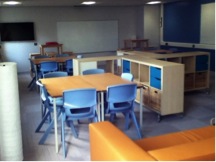Fiona Corfield has been Headteacher at Lerryn and St Winnow Primary Schools in Cornwall and is now School Improvement Lead with The Saints Way Multi Academy Trust. They have taken the brave step of sharing their journey towards becoming learning powered schools in a series of blogs, written by Fiona, for the Building Learning Power community.
Today’s first instalment deals with the need for change, and establishing an affording culture for learning.
I can’t tell you how many training courses we have attended and books we have bought linked to the development of learning. We have designed a flexible curriculum to enable us to meet both the learning needs and interests of the learner; for a time we blossomed with Bloom’s Taxonomy; we dabbled with ‘no hands up’; put ideas in the fridge; we mind map and use a range of ‘HOT’ questions; we CTG, NS, EBI, WAGOLL, Pit stop, and Magpie! But the question we seem to return to frequently is ‘Why do some pupils still ask what they need to do next and if they can get a ruler?’
The answer was simple … WE provide and drive all of these initiatives, not the learner.
No matter which route we enter teaching by, our training and the demands of the education system condition and drive us to impart knowledge and skills.
Definition of a teacher:
“Someone whose job it is to teach in a college or a school.”
Cambridge Dictionary
“A person who teaches or instructs…”
www.dictionary.com
But effective education is about the learner taking ownership of their learning and learning how to learn. This is what Building Learning Power is all about.
So, it seemed to us at The Saints’ Way MAT that there was a need to fundamentally challenge our thinking about educational provision. We needed to enable learning, not necessarily direct learning.
‘I do not teach anyone I only provide the environment in which they can learn.’
Albert Einstein
So this became our starting point. It just so happened that we had a new classroom that needed to be equipped for the coming year – a blank canvas. The brief we set ourselves was to create a flexible, neutral space that would facilitate learning. We had already equipped a number of classrooms with furniture from Ikea so returned to the catalogue for inspiration.
The first decision was to put all the furniture on casters to maximise flexibility within the space, we centralised the resources to provide large whiteboards at child height on every wall to enable pupils to think about, explore, plan and reflect upon their learning, these would become the Working Walls, ensuring that all information was current and relevant. A range of work and break out spaces were provided including tables and chairs, bar tables and stools, sofas, bean bags, an architect’s desk. Display boards were minimised, but those that remained were covered in neutral backing paper in order to maintain a calm space where the pupils’ work would provide the colour.
So the scene was set. The initial idea had been to run some Inset training. However, what had not been anticipated was the buzz that the room would create amongst the team, who asked if they could all be given the opportunity to spend a week in the room with their class up until the end of the summer term. The impact of which has been far more powerful than any Inset training could ever have been!
Each class enters on a Wednesday. The departing class shares with the new class one thing that made a difference to their learning that week. So, by the end of this term, every member of the team will have had the opportunity to work within the space and learn from each other. However, excitement continues to spread rapidly: not only have the teams who have worked within the space taken principles back with them to their own classes, those waiting for their opportunity are already experimenting with ideas of their own.
So here’s the challenge: How do we maintain the enthusiasm and momentum and embed this philosophy within the core of our practice across 31 classes and 5 schools, the smallest of which has 35 pupils and the largest of which has 530+pupils?
We can’t give you a definitive answer, but you are more than welcome to share in our journey…



Comments are closed.